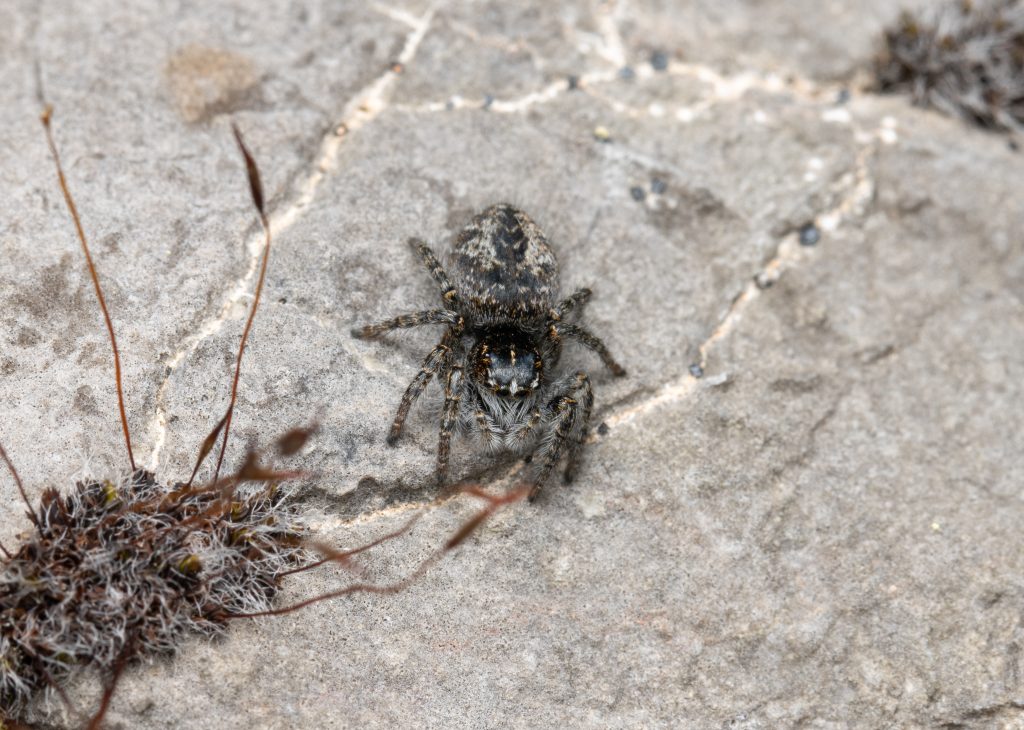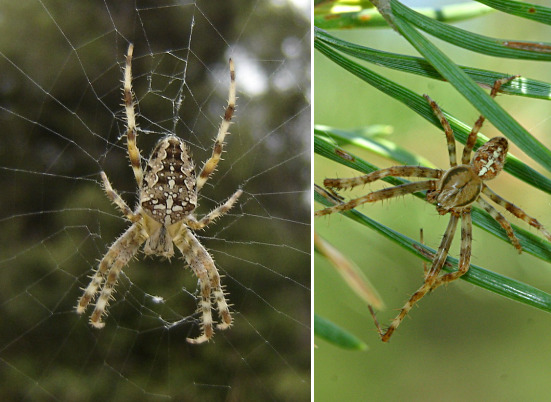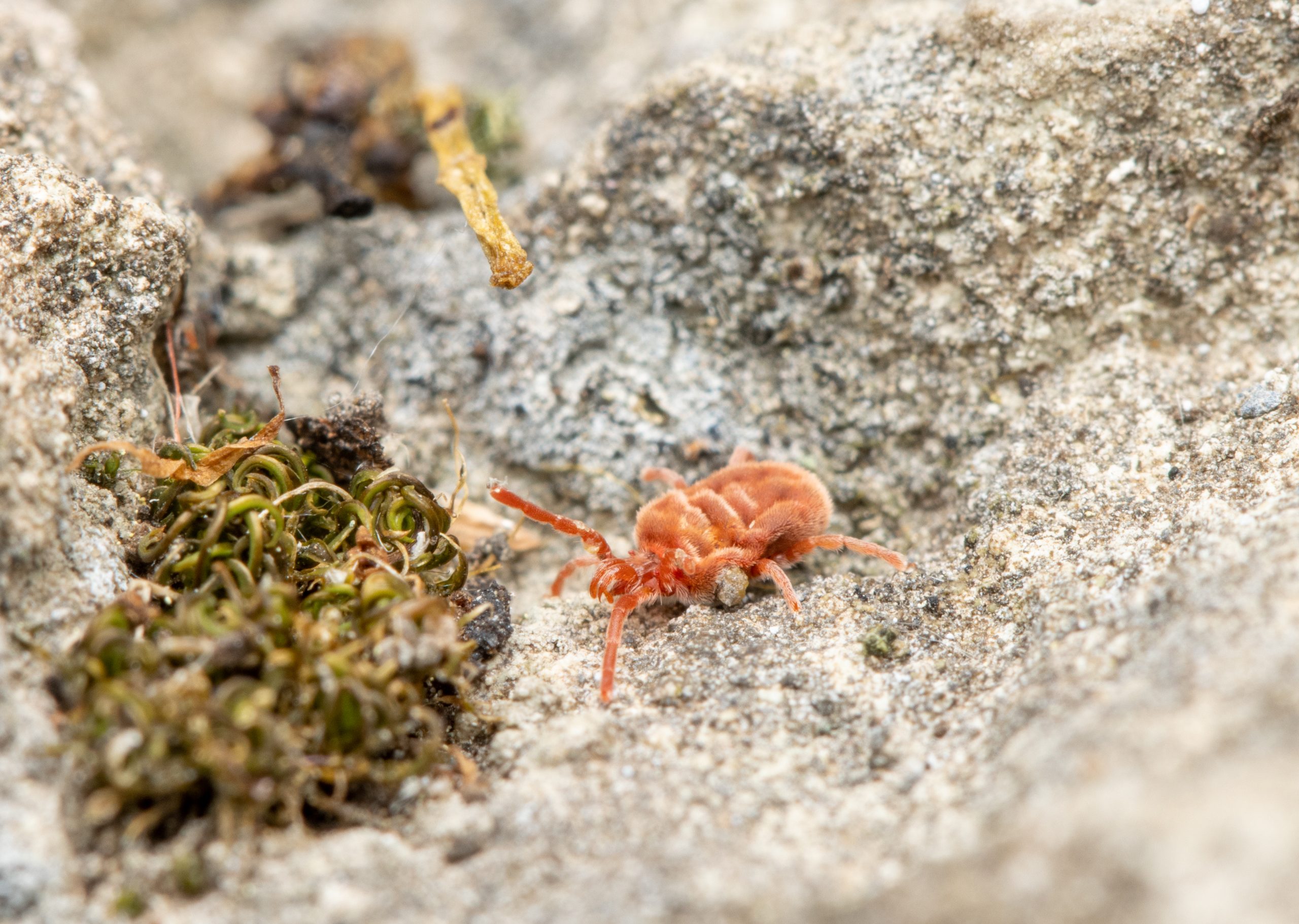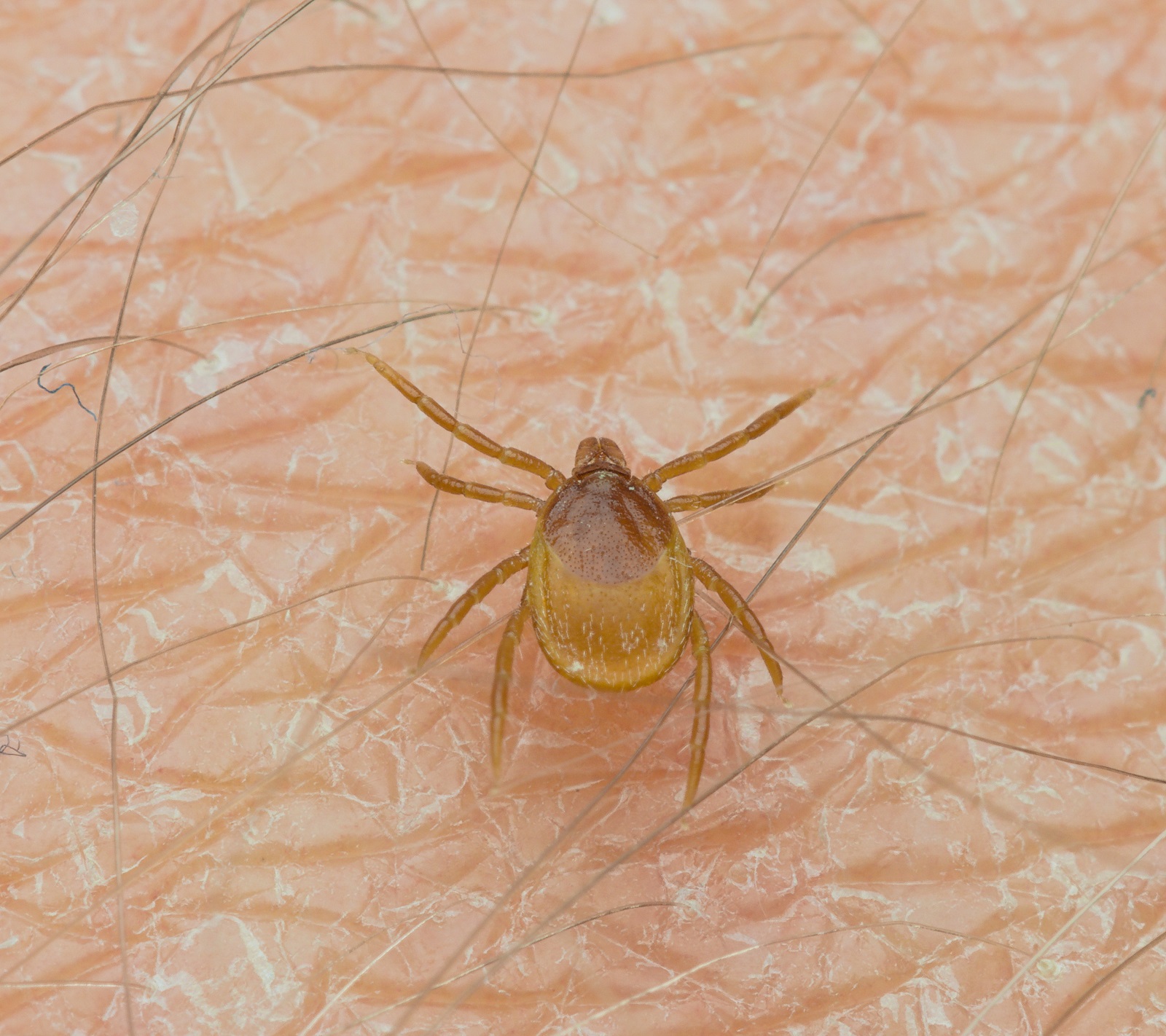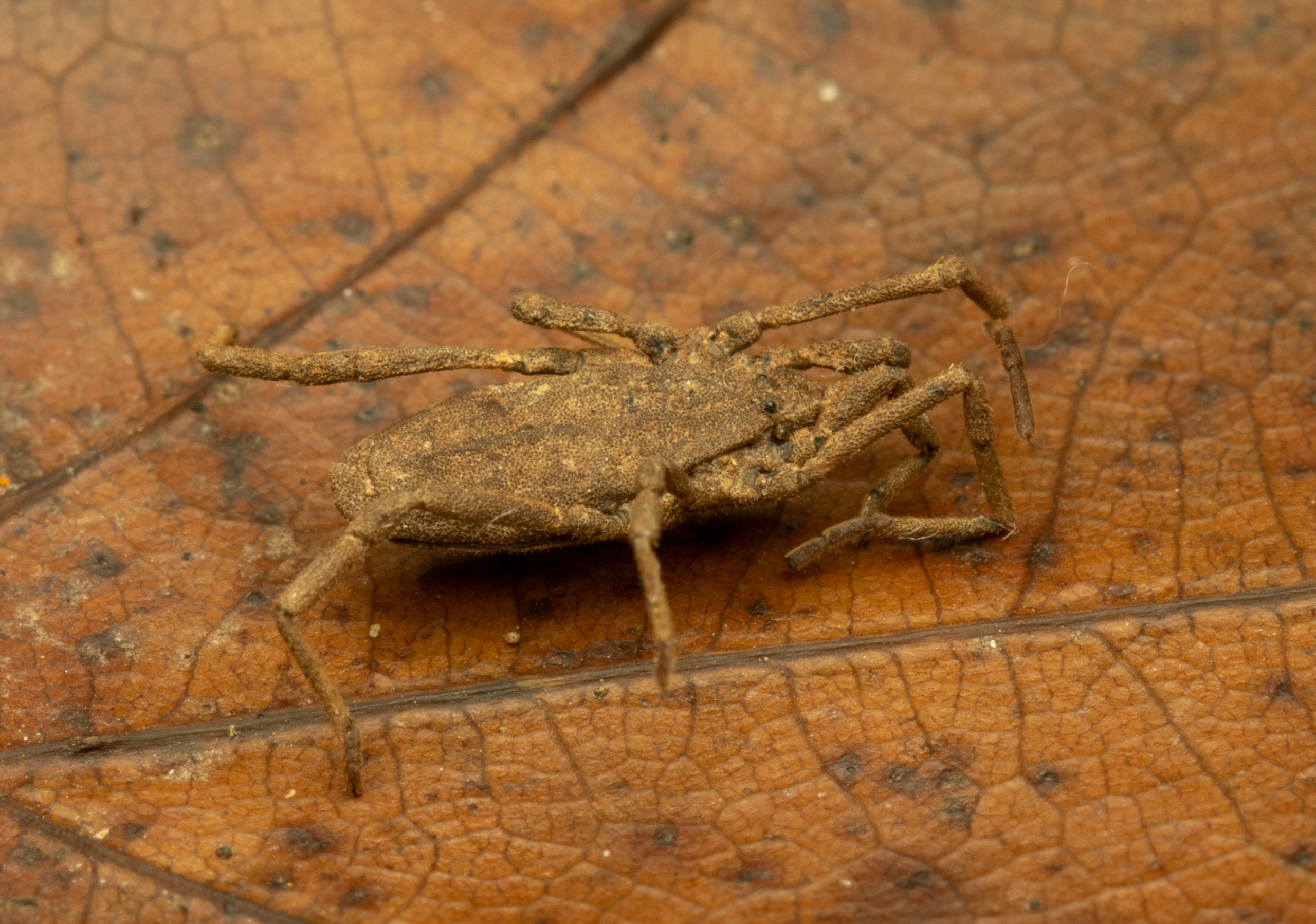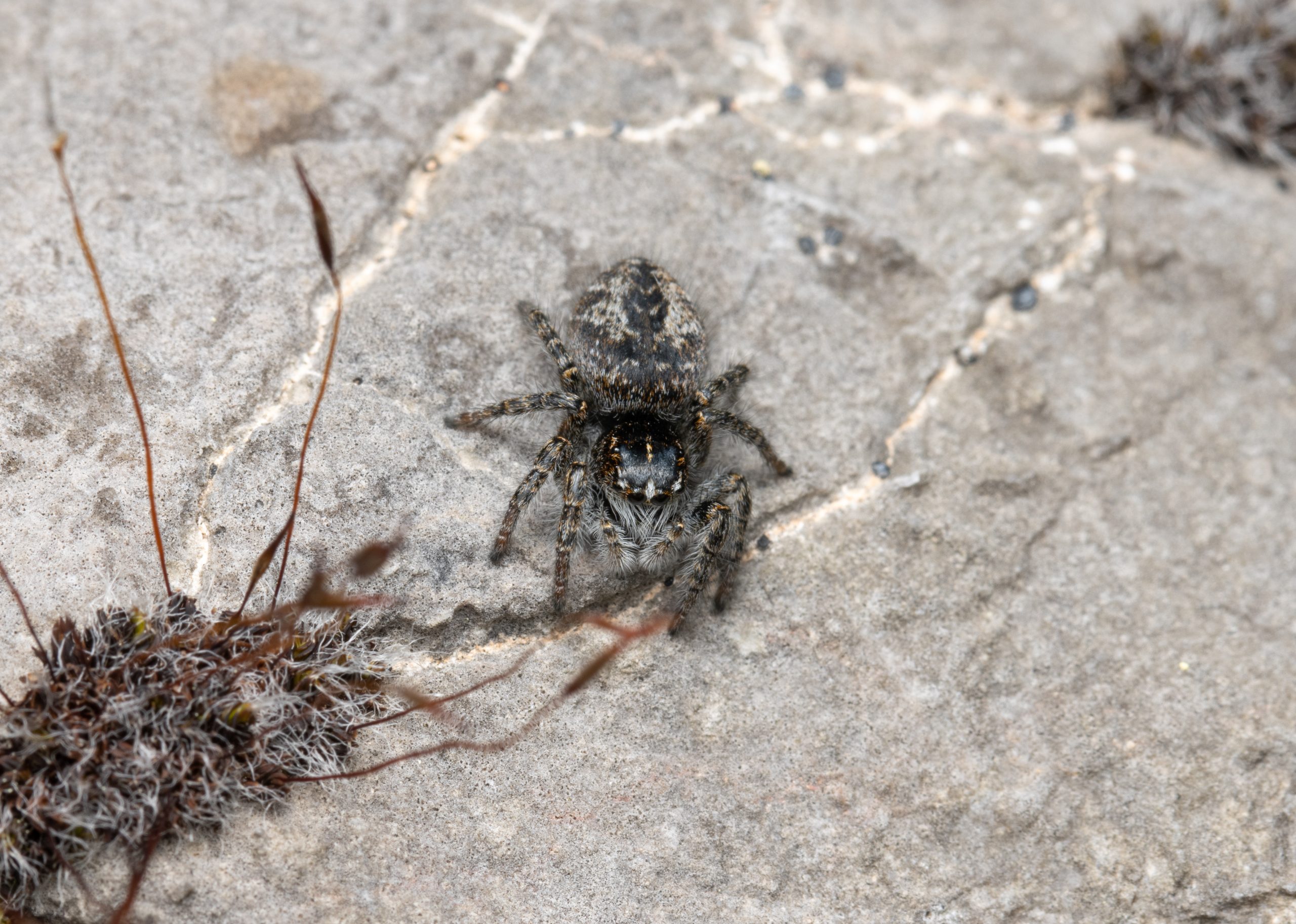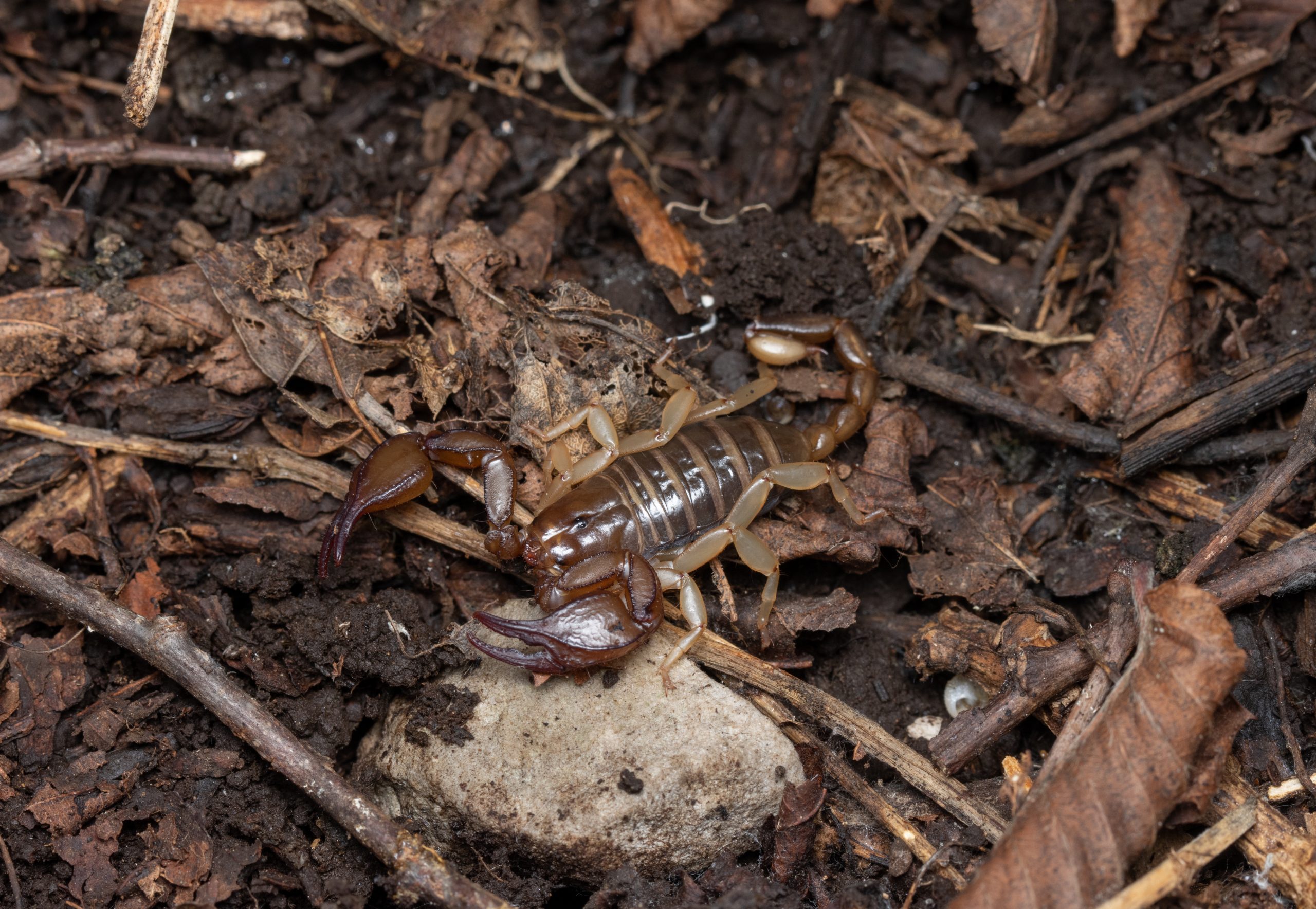- Chelicerata
Salticidae
The body of jumping spiders is, as in other arachnids, composed of a cephalothorax (prosoma) and abdomen (opisthosoma), which are joined by a narrow connection termed pedicel that increases the flexibility of their body.
The cephalothorax has a characteristic shape with a steep, elevated anterior face and consists of six fused segments dorsally covered by a uniform carapace. Anteriorly on the cephalothorax four pairs of eyes are located. The eyes are arranged in three rows and the largest pair are the front facing eyes in the lower row. The cephalothorax bears six pairs of appendages. The first pair are subchelate chelicerae modified as fangs able to inject the venom. The mouth is located at the base of the chelicerae. The second pair of appendages are pedipalps, which in females are in the form of short antennae, while in males they function in the transfer of sperm during mating. Following the pedipalps are four pairs of stout walking legs covered in short bristles and longer sensory setae (trichobothria). The distal end of each leg has a tuft of bristles which provide a good grip on the surface.
The abdomen is elongate and unsegmented. The first segment is narrowed into a pedicel. The abdominal appendages are reduced to three pairs of spinnerets at the end of the abdomen. At the front end of the abdomen a genital opening is located ventrally. In females the genital opening is covered by a chitinous plate (epigyne), whose form closely aligns with the shape of males’ pedipalps and prevents individuals of different species from mating. Near the genital opening the book lungs are located and near the spinnerets the tracheae have their opening.
The jumping spiders are the most numerous family of spiders with around 6000 described species. In Slovenia 66 species form 31 genera are present. They inhabit highly diverse habitats with the highest species richness in the tropical forests.
In contrast to other families of spiders, the jumping spiders have an excellent vision. Their eyes have a limited ability to focus the image; thus, they have to jump to the appropriate distance from the observed object to get it in focus. They are predators active during the day that either ambush or actively pursue their prey. They move by jumping. Before the jump they tether a filament of silk (dragline) to the surface, which protects them in the case of a fall.
More photos
Related arthropods

Authors
- Urban Bogataj,
- Gregor Bračko,
- Teo Delič,
- Cene Fišer,
- Žiga Fišer,
- Rok Kostanjšek,
- Rudi Verovnik,
- Miloš Vittori,
- Valerija Zakšek.
Students Vito Ham, Vesna Jurjevič, Gaj Kušar, and Adrijan Samuel Stell Pičman also participated in the project.
